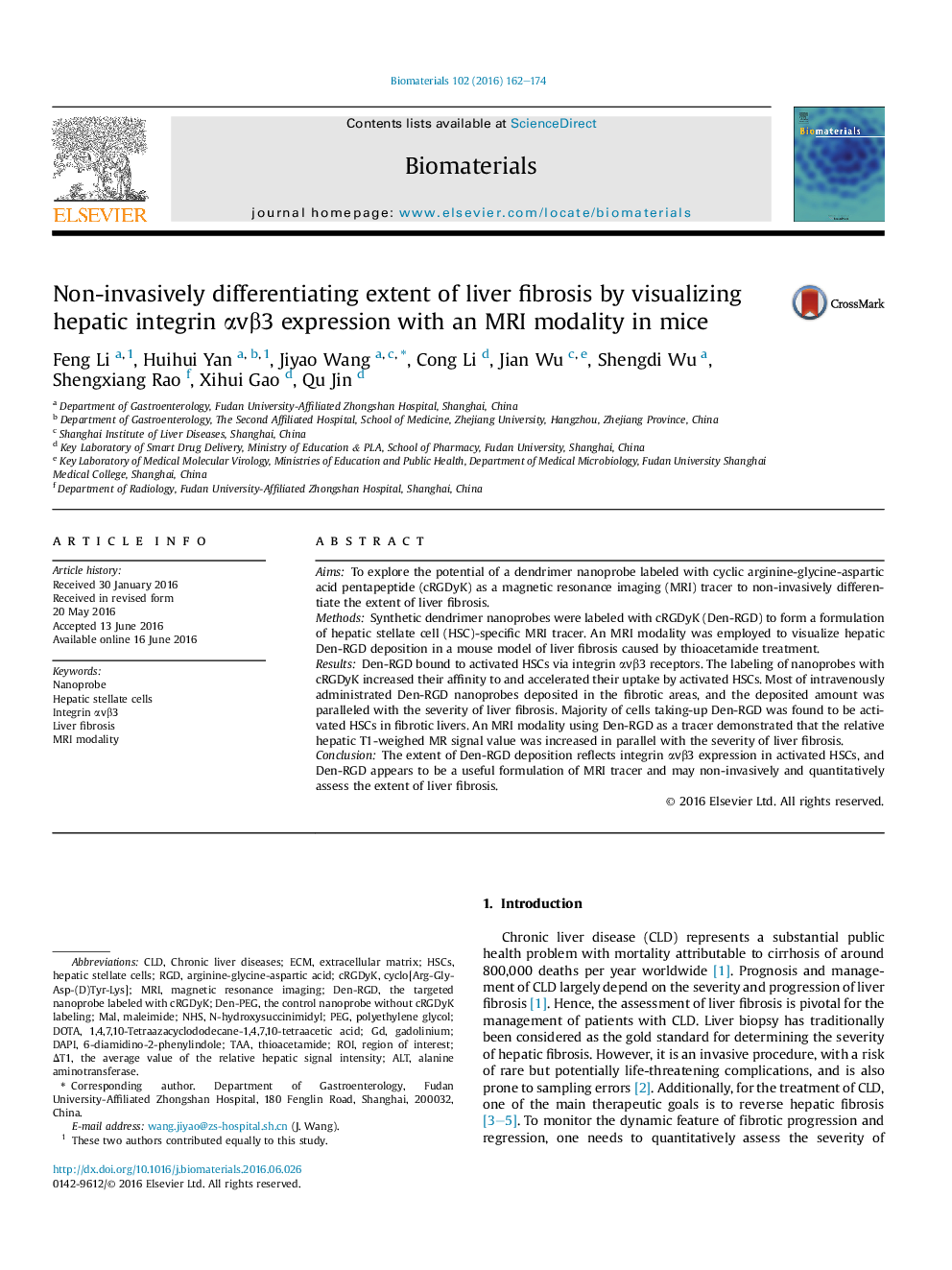| کد مقاله | کد نشریه | سال انتشار | مقاله انگلیسی | نسخه تمام متن |
|---|---|---|---|---|
| 5323 | 366 | 2016 | 13 صفحه PDF | دانلود رایگان |
AimsTo explore the potential of a dendrimer nanoprobe labeled with cyclic arginine-glycine-aspartic acid pentapeptide (cRGDyK) as a magnetic resonance imaging (MRI) tracer to non-invasively differentiate the extent of liver fibrosis.MethodsSynthetic dendrimer nanoprobes were labeled with cRGDyK (Den-RGD) to form a formulation of hepatic stellate cell (HSC)-specific MRI tracer. An MRI modality was employed to visualize hepatic Den-RGD deposition in a mouse model of liver fibrosis caused by thioacetamide treatment.ResultsDen-RGD bound to activated HSCs via integrin αvβ3 receptors. The labeling of nanoprobes with cRGDyK increased their affinity to and accelerated their uptake by activated HSCs. Most of intravenously administrated Den-RGD nanoprobes deposited in the fibrotic areas, and the deposited amount was paralleled with the severity of liver fibrosis. Majority of cells taking-up Den-RGD was found to be activated HSCs in fibrotic livers. An MRI modality using Den-RGD as a tracer demonstrated that the relative hepatic T1-weighed MR signal value was increased in parallel with the severity of liver fibrosis.ConclusionThe extent of Den-RGD deposition reflects integrin αvβ3 expression in activated HSCs, and Den-RGD appears to be a useful formulation of MRI tracer and may non-invasively and quantitatively assess the extent of liver fibrosis.
Journal: Biomaterials - Volume 102, September 2016, Pages 162–174
